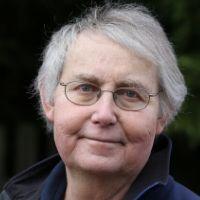
Faculty Developer and Host: Dr. Corey Cleland, Biology

Fall semester (October 2- Nov 13) availability
Mondays and Wednesdays 9-11 and 11:30-1
Not available Nov 6-13
Description
The loss of limbs and spinal cord injury is becoming one of the greatest medical challenges of the 21st century for doctors and health care providers to treat; which raises the question, “how can these injuries be treated”? In this workshop we will explore how doctors and engineers use prosthetics to replace the function of lost limbs by conducting authetnic laboratory experiments. By the end of the workshop, students will better understand the medical challenges and solutions of modern prosthetics, as well as gain insight into the normal functioning of our neuromuscular system.
Overview of What Your Students Will Be Doing
1. Discussion of the impact of limb loss
2. Brainstorming medical solutions
3. Laboratory Part I: Recoding electrical activity of muscle to explore how electrical signals from functioning muscles can be used as control signals for prosthetics.
4. Laboratory Part II: Using electrical activity of muscles to control a prosthetic claw to better under the process and challenge of prosthetic replacements after limb loss.
5. Wrap Up
Differentiation
The practices will be the same for both students, but the content related to the underlying science principles will be modified for middle school students.
Helpful Background Knowledge
Most importantly, students should be willing to explore the laboratory activities, to be willing try to out their own ideas. No background knowledge is needed; what information is needed about the brain and muscle will be provided. For laboratory experiments, the students must pay close attention and follow directions to obtain good quality signals.
Transferable STEM Skills Practiced
- The process of science
- Engineering design thinking
- Data interpretation/analysis
- Data visualization
- Problem Solving
Cross-Disciplinary Connections
- Biology: Organization of the brain, neural signaling, muscle function
- Physics: The role of electrical activity in muscle movement and how amplifiers are used in this area of research
- Medicine: Neurology of movement control
- Engineering: students will need to make electrical connections and interpret recordings. Prosthetics is a central area of bioengineering.
Connections to Dr. Cleland's Teaching and Research Interests
As a neurobiologist interested in the neural control of movement, the design and control prosthesis form one of the more important implications of the basic research that Dr. Cleland conducts. Further, the recording techniques used in this session are the same used in Dr. Cleland's research lab.
Examples of Connections to Solving Real-World Challenges
Medicine and technology are converging; prosthetics is one example where scientists, engineers and health care providers collaborate to benefit the patient. Other similar complex technologies that benefit patients include heart pacemakers and artificial organs.
Related Careers
- Bioengineers design and construct artificial prostheses and the recording systems that control them. This is a general video on what bioengineers do.
- Physicians and other health care providers work directly with patients to match prosthetics to their individual needs. The video is targeted to prosthetics but is presented by a physician in training.
To Share with Your Students Before the Visit
Extra Background Information for Teachers
- This video is a good introduction (<2 minutes)
- This video is longer (~15 min) but discusses the human approach and is less technical.
- This video shows almost exactly what we will be doing in the 2nd experiments (though our “arm” will be just a simple claw). The first part of the video is full of jargon, but by 1:41 it gets interesting.
